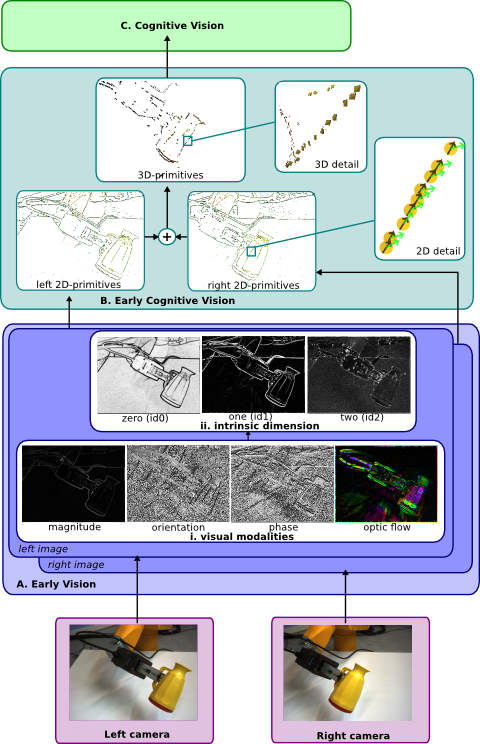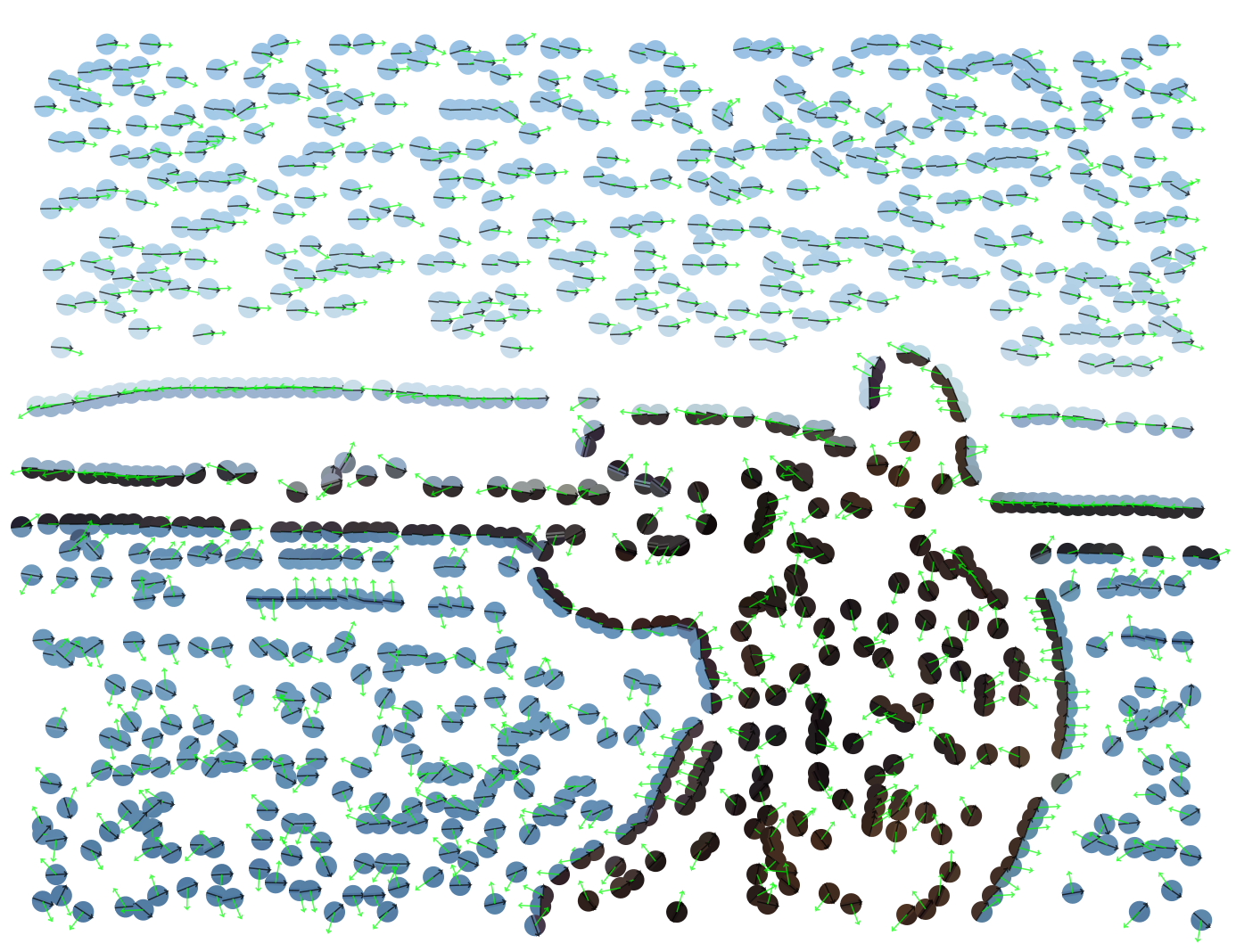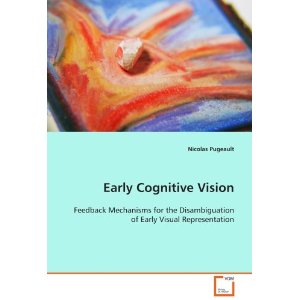Nico's Homepage
Early Cognitive Vision
There is a semantic gap that separates images (mere arrays of pixels) from a semantic understanding of the world (in terms of objects, trajectories and affordances).
Visual Primitives
The generic representation we propose [1,2] is based on local multi-modal symbolic feature descriptors called Visual Primitives. Previous work focused on extracting primitives at image edges, but there is ongoing work to extend this to different type of local image structure.

Inter-process Feedback
During my PhD, I investigated how recurrent feedback mechanisms allow to improve the visual representation's robustness and accuracy [1,3]. I especially focused on the interaction between stereopsis, perceptual grouping and tracking. These recurrent feedbacks were shown to improve considerably the visual representation's robustness and accuracy.Cognitive Vision Software (CoViS)
This work constitutes the backbone of CoViS (Cognitive Vision Software) that is now at the core of the Danish research group in Odense and used in both PACO-PLUS and DrivSco projects. This software library has now been released under BSD license - the project's homepage is here. This work was conducted at the University of Stirling as part of the the EU--project ECOVISION. Acknowledgements: Norbert Krüger and Florentin Wörgötter (see references).References
 [1] Nicolas Pugeault (2008)
Early Cognitive Vision: Feedback Mechanisms for the Disambiguation of Early Visual Representation,
[1] Nicolas Pugeault (2008)
Early Cognitive Vision: Feedback Mechanisms for the Disambiguation of Early Visual Representation,
ISBN 978-3-639-09357-5, Verlag Dr. Muller.
(PhD Thesis, also avaible here)
[2] Pugeault, N., Wörgötter, F., and Krüger, N. (2010). Visual primitives: Local, condensed, semantically rich visual descriptors and their applications in robotics. International Journal of Humanoid Robotics, Special Issue on Cognitive Humanoid Vision, 7(3):379–405. (pdf)
[4] Wörgötter, F., Krüger, N., Pugeault, N., Calow, D., Lappe, M., Pauwels, K., Hulle, M. V., Tan, S., and Johnston, A. (2004). Early cognitive vision: Using gestalt-laws for task-dependent, active image-processing. Natural Computing, 3(3):293-321. (link)
[5] Krüger, N., Pugeault, N., Başeski, E., Baunegaard With Jensen, L., Kalkan, S., Kraft, D., Jessen, J.B., Pilz, F., Kjær-Nielsen, A., Popovic, M., Asfour, T., Piater, J., Kragic, D., and Wörgötter, F. (2010). Early Cognitive Vision as a Front-end for Cognitive Systems. In proceedings of the Workshop of Vision for Cognitive Tasks, at ECCV'2010 (pdf)
[6] Jessen, J.B., Pilz, F., Kraft, D., Pugeault, N., and Krueger, N. (2011). Accumulation of Different Visual Feature Descriptors in a Coherent Framework. In Proceedings of the Scandinavian Conference on Image Analysis (SCIA) 2011. (pdf)